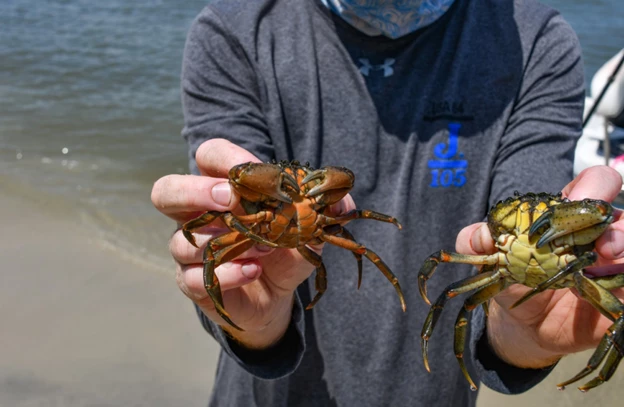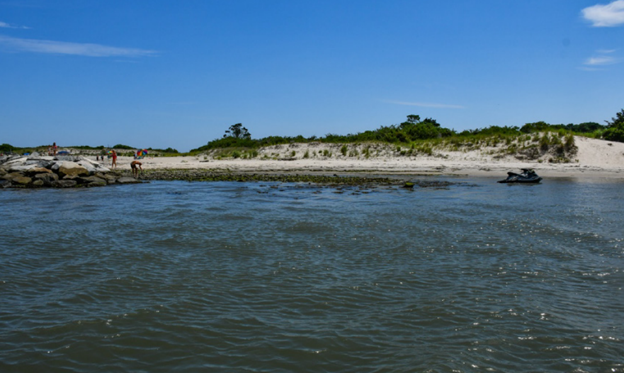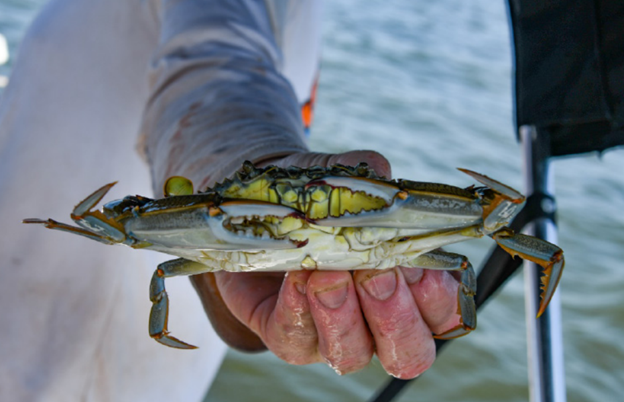Last updated: October 16, 2025
Article
Surveying for Troublemakers—Invasive Crabs Inventoried at Assateague Island National Seashore
August, 2025
The European green crab (Carcinus maenas) is a clever creature with a few tricks up its claws. This species can travel over a mile in six hours, breathe air, and survive out of water for at least ten days. The green crab has demonstrated one other powerful ability—taking over our seashores. At Assateague Island National Seashore (NS), green crabs are considered an invasive species.

NPS
Crawling into Mischief
The green crab is not alone in its invasion of this unique seashore in Maryland. The Japanese shore crab (Hemigrapsus sanguineus) and Chinese mitten crab (Eriocheir sinensis) are also stirring up trouble. These crabs are predators of several native species including oysters, clams, scallops, fish, and other crustaceans. They may also pose as threats to commercial shellfish farms, which can affect people's livelihoods. When present in high densities, the green crab is known to harm aquatic vegetation and contribute to the spread of parasites. To begin tackling these issues, Assateague Island NS staff teamed up with the National Park Service Inventory and Monitoring Program to survey for crab abundance and distribution at the seashore.

NPS
Setting up Traps
To determine if various types of habitats support the populations of invasive crabs, each habitat type at the seashore was sampled. Traps were spread out across rocky, vegetated, and unvegetated areas. A total of 63 trapping stations were set up with 21 sampling sites at the various habitats. Crab traps were placed where tidal elevations matched the known range and preferences of the invasive species. Researchers then checked the traps 24-48 hours after deployment and counted all captured specimens. If any invasive crabs were caught, biologists determined their sex and measured the width of their carapace (or outer shell) to see if the individuals were old enough to reproduce.

NPS
Who got Caught?
A total of three green crabs were captured during the survey, including two males and one female. All were found at a rocky habitat location, and no Japanese shore crabs or Chinese mitten crabs were caught during the survey period. Researchers found a total of five different crab species, including four native and one invasive. One species in particular, the blue crab (Callinectes sapidus), was found at all three habitat types. This is good news since blue crabs are considered one of the green crab’s predators. It may explain why the green crabs were drawn to rocky habitats—to avoid predation. Blue crabs may be able to help control the population growth of these invasive stinkers!
Restoring the Balance
This inventory assists park managers at Assateague Island NS to decide what actions to take for addressing invasive species. It can help them select areas that may be suitable for oyster and aquatic vegetation restoration. The Maryland Coastal Bays National Estuary Program facilitates a regional shellfish restoration working group, and this survey's results may be used to support their efforts. With thoughtful conservation actions, there is hope for restoring the seashore’s ecosystem by keeping these troublemaking crabs in check!
Want to learn more? Check out the final products from this project.
